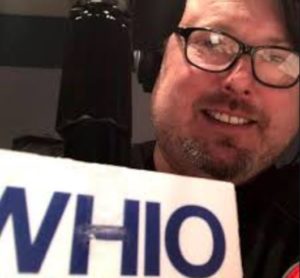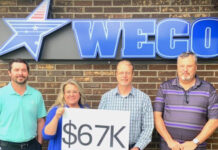
(By WHIO Dayton Host Todd Hollst) This past Memorial Day, the city of Dayton, my hometown, and a number of cities in our Metro, were ravaged by fifteen tornadoes, ranging in strength from an EF-0, to an EF-4. If you don’t know, EF-5 is the top of the scale.
The night of the storms, I was at home watching the coverage on our sister TV station, WHIO-TV. Of course, they were wall to wall and giving people life saving information and sheltering instruction. After receiving a text from my Program Director, Jeremy Ratliff, he asked if I was able to safely come in and prepare to give radio coverage and take calls. As an obsessive broadcaster and considering this was my hometown, I put safety aside and came into the station ready for whatever came our way. When I say “I”, I really mean my wife and Malti-Poo. We live in Xenia, Ohio and in 1974 an EF-5 tornado swept much of the city off its foundation. We left for the station and arrived safely. Though, at moments, the drive was a bit more exciting than we anticipated.
Flash forward to the days after the storms. We preempted regular programming on WHIO and I was talking to the Miami Valley and hearing what many of our listeners experienced in the storm. Sadly, though miraculously, only one person died in the outbreak that night. It was breathtaking to see and hear how many were affected in the aftermath. People were sharing their stories of survival and praise for our warnings, both on TV, radio and the WHIO app. But what became clear through the conversations, was how after the storms swept through, there were upwards of sixty-thousand people without power. Some for as long as a week. All many were left with in the days after, was over-the-air RADIO.
My home and immediate community was not impacted by the storm directly but as I listened to the calls, I realized how totally unprepared our home was for the disaster we narrowly missed.
Imagine a broadcaster, of nearly thirty years, having worked in both radio and TV, didn’t have a battery operated radio. I was embarrassed and bit ashamed—and I said so on the air.
Radio is the communications medium that can be the savior when everything else comes crashing down in a community. It’s immediate, takes less working parts than other mediums, and can speak unfiltered to a community in need. They hear us, but most importantly we hear them—instantly.
As I talked with our listeners about their recovery challenges, it was shocking to me how many people were in the same boat as me; other than their cars, many could not hear radio. Cell towers had fallen, cable TV and Wi-Fi was sparse at best, and some who had home radios, couldn’t find them in the debris. But their need for our broadcasts with vital information remained.
All I can say in-hindsight, is while the idea of radio and the impact it can have on saving lives and helping rebuild a city isn’t in dispute—we’ve demonstrated this at WHIO radio—the technology needs to be there to ensure anyone with a cellphone can access radio; not streaming but over-the-air, without complication or resistance.
I don’t pretend to be an engineer or a technology guru but as someone who remembers the historic 1974 Xenia tornado in my town and experienced (through our listeners) the 2019 Memorial Day storms, our communities need our medium more than ever. Local radio matters as much as the local school, hospital and grocery. It’s part of the fabric of a community. It may take different shapes and forms but it’s vital.
As we become more reliant on computers and the internet for information, we need to push harder for action from the companies who sell millions of cellphones, to make sure our public can hear us when lives are at stake.
Todd Hollst is a talk show host in WHIO Radio in Dayton and can be reached by e-mail at [email protected]






